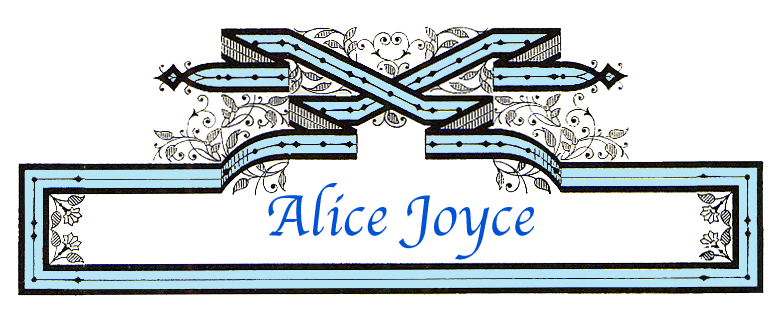

[Omitted, three photos of Alice Joyce: bust turned to left with hand on cheek and feathered hat, and facing right holding telephone with white dress, long gloves, and pearls in hair. Caption: She is distinctly a beauty--and, what is more rare, a beauty unaffected and unspoiled. Third picture is a half figure, holding something in right hand and facing camera. Caption: This star of the motion-picture drama is a Virginian by birth]
ALICE JOYCE is one of those princesses of the medieval troubadours, dwelling aloof in a mysterious castle of Far-Away Land, remote from the world that sings praises of her beauty, smiling yet inaccessible to legions of lovers in fancy, speaking gentle words in a voice of music that her eager listeners never hear.
She is a star of the motion-picture drama.
"I'm afraid I'll be a disappointment to people who only know me on the films," she protests, to the venturesome interviewers who has climbed the Palisades at Weehawken to seek her out in the open-air "studios" of the Kalem aggregation. "If you use portraits of me, please take only the good ones." It would be almost impossible to go wrong in the case of portraits of Miss Joyce. She is distinctly a beauty--and, what is more rare, a beauty unaffected and unspoiled.
She is a Virginian, but since childhood has lived in New York, where the artist-photographers were not slow in discovering her as a model. From this, the transition to the picture-drama was easy, though in the case of Miss Joyce it was not obvious, as her disposition is one of modest reserve, almost akin to shyness That is probably the reason why the phenomenal popularity which has come to her in less than four years' work with the "movies" has not as yet culminated in her exploitation in the spoken or the lyric drama.
[Omitted, three photos of Joyce: Kneeling on a chair with white dress, gloves, and pearls in hair (which appeared in the film he Artist's Sacrifice (1913), and is cut out of same photo which appeared in the Theatre article, but reversed), looking at camera in strapless gown with arms akimbo (Caption: From an artists model the transition to the picture-drama was easy), and looking to right left hand on chin, in same white dress, gloves, pearls, but with a wrap around the neck and back of head (Caption: Like a princess of the medieval troubadours, dwelling aloof in a mysterious castle.)]
"No, I don't dream of ever doing that sort of thing myself. Indeed it would be too wearing, even if I had the talent. No matter how strenuous or emotional our acts are that we play before the camera, they can't last more than fifteen or twenty minutes at the longest, because that is the limit of the thousand-foot reel.
"At the same time, there is enough real technique--in fact, art--to satisfy the most ambitious would-be actress. We 'create' characters in a literal sense, more completely than an individual player does on the regular stage, I think. With only a skeleton scenario to build upon, we have to imagine what the characters in a story look like, how they dress, and what they would naturally say in this or that situation--and we have to improvise appropriate lines as we go along. Besides, we have to keep in the picture--actually within the nine-foot line, at say, forty or fifty feet distance. At twenty feet, for intimate scenes, the focus is so narrow that there is scarcely room to turn around. Yet we have to look pleasant, and not move awkwardly, and keep our minds fixed on the swift action."
"How did you acquire it?"
"Oh, it was beaten into me. When I first tried acting before the camera, I could do nothing but blush. The first part in this new work that interested me was that of an Indian girl--"The Love of Summer Morn." Our director took us out to the Pacific Coast. We camped two weeks in the Mojave desert--There! I must go. The 'Hand of Fate' beckons me.
In another minute she was seated in a drawing-room, writing an imaginary love-letter, while the cinematograph clicked one of those Alice Joyce films that are the joy of moving-picture "fans."